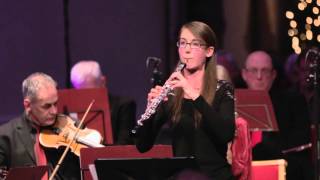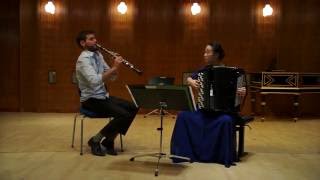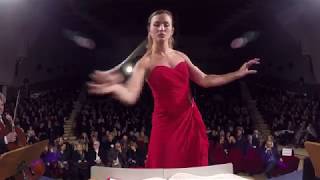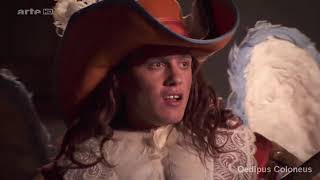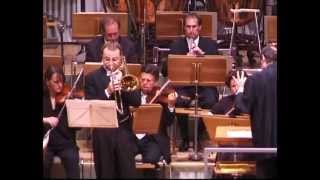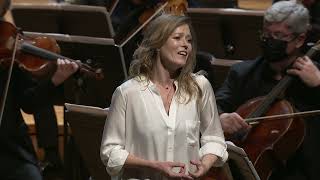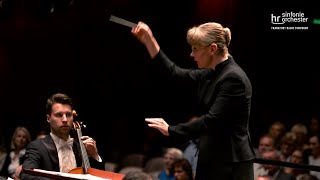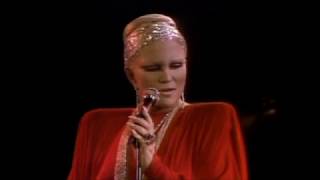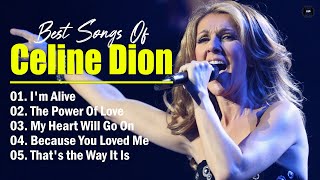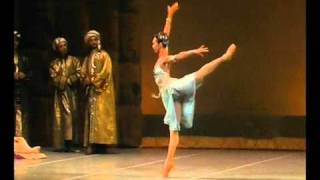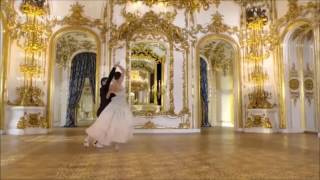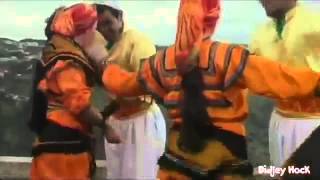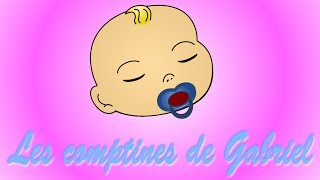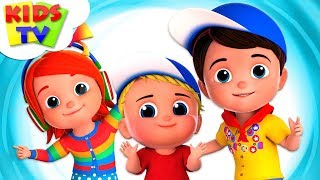On July 31, the Feast of S. Ignacio is celebrated
Recommended music videos for initiation to classical music
Ignatius of Loyola (1491-1556) was a Basque military, and later religious, who emerged as a religious leader during the Counter-Reformation ; his devotion to the Catholic Church was characterized by absolute obedience to the Pope . Founder of the Society of Jesus, he spent fifteen years at its head, remaining in Rome . His Spiritual Exercises , published in 1548, exerted a proverbial influence on later spirituality. The Methodist Jesse Lyman Hurlbut considered Ignatius of Loyola one of the most notable and influential personalities of the 16th century . Pope Gregory XV canonized him on March 12, 1622. He died on July 31, 1556, and his body, which was initially entombed in the church of Santa Maria della Strada , was transferred to the Church of the Gesù , headquarters of the Company .
Nemesio Otaño y Eguino (1880 –1956) was a Jesuit composer and musicologist. At the age of 6 he began to study music theory, at 8 piano and at 11 organ. In 1896 he entered the Society of Jesus and was soon appointed organist at the Basilica of Loyola . In 1907 he organized the First National Congress of Sacred Music in Valladolid ; That same year he founded Música Sacra Hispana , a magazine that he directed until 1922; he also created and directed the famous Schola Cantorum of the Comillas Pontifical University and between 1940 and 1951 he directed the Madrid Conservatory . Throughout his life Otaño wrote abundant works of popular and religious inspiration. In 1941 he was made a Knight of the Order of Alfonso X el Sabio and in 1943 he entered the San Fernando Academy of Fine Arts .
The March of San Ignacio was written by Nemesio Otaño for the celebration of the first centenary of the Reestablishment of the Society of Jesus . The version that we present today is offered by the Orfeón Donostiarra, the Choir and Choir of San Ignacio de San Sebastián, the Eskifaia Choir of Fuenterrabía, the Choirs of Azpeitia and Azkoitia, the organist and soloist José Manuel Azkue and the Euskadi Symphony Orchestra , directed @ s tod@s ell@s by the teacher Enrique Ugarte .
Tomaso Albinoni (1671-1751) was an Italian Baroque composer, who was born and died in Venice ; known in his time for his operas, when nowadays his popularity comes from instrumental music and, above all, from his famous Adagio , which apparently was not written by him, but composed in 1945 by the Italian musicologist Remo Giazotto based on some fragments of a sonata for strings and organ by Albinoni . In contrast to the composers of his time, he never claimed a position in the Church or at Court , since he defended himself with his own resources and was in love with his own independence. Son of a wealthy family, he studied singing and violin and composed some 50 operas and abundant instrumental music; fundamentally, sonatas for solo and trio, and concertos for oboe and violin.
Today we propose the viewing of the 2nd movement of his Concerto for oboe in D minor in interpretation of the oboist Amy Roberts
Richard Galliano (Cannes 1950) is a Franco-Italian musical composer and accordionist. He started out playing piano and accordion with his father, Lucien Galliano , an Italian based in Nice . Later he expanded his studies with Professor Claude Noël , who introduced him to the world of jazz . He continued his musical studies at the Nice Conservatory , directed at the time by the organist Pedro Cochereau . There he took counterpoint, harmony and trombone classes. In 1983, Astor Piazzolla invited him to act as the first bandoneon soloist in a French comedy with music by Piazzolla himself. This was the beginning of a great friendship between the two musicians, which lasted until Astor Piazzolla 's death in 1992.
Tango is a musical genre and a characteristic dance of the Río de la Plata region and its area of influence, but mainly of the cities of Buenos Aires (in Argentina) and Montevideo (in Uruguay). Six main musical styles left their mark on tango: the Andalusian tango, the Cuban habanera, the candombe, the milonga, the mazurka , and the European polka . The tango revolutionized popular dance by introducing a sensual dance with an embraced couple that proposes a deep emotional relationship of each person with their own body and of the bodies of the dancers with each other. Musically it usually has a binary form (theme and chorus) or ternary (two parts to which a trio is added). On September 30, 2009, UNESCO declared it Intangible Cultural Heritage of Humanity.
Johann Strauss Jr. (1825-1899) was an Austrian composer, son of Johann Strauss and brother of composers Josef Strauss and Eduard Strauss ; Known during his lifetime as "the king of the waltz", he was an essential factor in its evolution and sophistication, from being a peasant dance to an entertainment dance for the Imperial Court . He is the best known of the family for his waltzes, his polkas and his marches; composer, in addition, of several operettas. His father wanted to prevent his son from going through the straits of a musician's life, so it was his mother who helped him and encouraged him to focus on music. His work forms the basis of the repertoire offered annually at the Vienna Philharmonic Orchestra 's New Year's Concert .
The march is a work that enters into compositions defined by movement or rhythm and can be considered within the dances andadas . It is structured in a binary or quaternary time signature, although the most common is binary and its musical form generally consists of a theme, development, trio and restatement of the theme, sometimes including an introduction and a coda . There are different types of marches: circus march , with a hasty pace; funeral march , with slow walking; military march , brisk walk; wedding march , with a solemn air; processional march used to accompany Holy Week processions; redoubled march or pasodoble , whose origin is the military march; triumphal march , commemorative of some glorious event; etc etc
Today we offer the Persian March by Johann Strauss Jr. performed by the Nuova Orchestra Scarlatti conducted by the Italian maestro Beatrice Venezi
Recommended classical music videos
Domenico Zipoli (1688–1726) was an Italo-Latin Baroque composer, considered the most famous European composer to have traveled to America during the colonial period. From 1707 he studied in Florence , Naples, Bologna and Rome where he held various positions, the most important of which was organist at the Chiesa del Gesu . During the first months of 1716, Zipoli traveled to Seville, where he began his novitiate, entering the Jesuit Province of Paraguay on July 1. The following year he settled in Córdoba , Argentina , where he completed his studies in philosophy and theology. He died in 1726 due to an infectious disease, probably tuberculosis, after writing abundant religious works and the opera that we present today.
San Ignacio de Loyola is an opera in two acts with an eminently pedagogical libretto whose purpose was evangelization. The main characters are Saint Ignatius of Loyola, Saint Francis Xavier and the Devil who unsuccessfully tempts the two saints. Being a work written to be represented in the missions, usually by children, it is written for a treble voice range. (Extracted from Scherzo Magazine) . The version that we offer today is conducted by the maestro Gabriel Garrido .
Leopold Mozart (1714-1719) was an Austrian composer, as well as a violinist, teacher, and conductor. Father of Wolfang Amadeus Mozart , as a child he was a church treble and studied, in addition to piano and violin, philosophy and law, graduating in Salzburg where he would live all his life dedicated professionally to music. At the age of 28, he married Anna María Pertl with whom he had seven children, five of whom died in infancy. The two who survived were two child prodigies, Maria Anna Ignatia and Wolfgang Amadeus . The year after they were married, he was appointed court composer to the Archbishop of Salzburg . He wrote chamber music, symphonies, concertos, songs, cantatas, and masses.
The trombone is a brass wind instrument. Its sound is produced thanks to the vibration of the interpreter's lips in the part called the mouthpiece from the column of air directed by the interpreter. The instrument is made up of the following parts: Mouthpiece or embouchure : a small, hollow piece that fits into the tube of the trombone for the performer to blow, so that the lips rest on the edges, vibrate and produce the primary sound. Pavilion or bell : it is the final widening of the tube. Rod : it is U-shaped and moves in seven different positions with different lengths of the tube. The trombone slide does not allow great speeds when playing, but it is perfect for playing glissandos (rapidly progressive path of sound between two notes).
instrument family . Although usually the most used trombone is the tenor, his family has instruments of different ranges from the soprano trombone to the contrabass trombone. In the video that we offer today, the leading role falls on the alto trombone (smaller and therefore higher pitched than the tenor trombone , which is the most frequent trombone in the universal repertoire). The work referred to is Leopold Mozart 's Concerto for Alto Trombone in interpretation by Péter Vámosi accompanied by the Baden-Baden Philharmonia Orchestra conducted by maestro Erwin Stiefel .
Jacques Offenbach (1819-1880) was a French cellist and composer of German origin who converted to Catholicism in order to marry the Catholic Herminia de Alcain . He began his musical studies with his father, a music teacher; at the age of 14 his family moved to Paris where he continued his studies with Cherubini . In 1855 he founded the Bouffes Parisiens theater, where he staged his own plays, which reflect the joie de vivre of his time. It also presented amusing adaptations by other musical geniuses such as G. Rossini . His German ancestry made him enemies after the Franco-Prussian War; enemies that he reflected with irony representing them in his operettas. The greatest exponent of French operetta (he wrote hundreds of them), his remains rest in the Montmartre cemetery.
Gaîté Parisienne is a ballet choreographed by Léonide Massine to music by Jacques Offenbach, orchestrated by Manuel Rosenthal in collaboration with Jacques Brindejonc-Offenbach , the composer's nephew. The Ballet depicts the flirtations, pleasant dances, and good humor of a diverse group of people from various social classes who frequent an elegant Parisian café on a night in the Second Empire period (1851-1870).
Today we offer a Suite/Selection of the work being performed by the Radio France Philharmonic Orchestra conducted by the Canadian soprano and conductor Barbara Hannigan (1971) who since 2011 has directed, among other important orchestras, the Berlin Philharmonic and other orchestras in Munich, Toronto, Cleveland, Gothenburg or Prague .
Magnus Lindberg (1958) is a Finnish composer, who studied at the Sibelius Academy in Helsinki with Einojuhani Rautavaara and Paavo Heininen . He attended summer courses in Siena (with Franco Donatoni ) and in Darmstadt (with Brian Ferneyhough ). After graduating from the Sibelius Academy in 1981, he traveled extensively in Europe , pursuing private studies with Vinko Globokar and Gérard Grisey in Paris , and making contact with traditional Japanese percussion and punk rock in Berlin . From a very early age he begins to compose long-lasting works of an experimental nature and to invest in concrete music (sound is manipulated in different ways and then fixed on tape or CD).
Parada is an orchestral composition by Magnus Lindberg composed for the Related Rocks music festival celebrating the works of Lindberg and related composers. Its world premiere was given at The Anvil, Basingstoke on February 6, 2002 by the Philharmonia Orchestra under the direction of Esa-Pekka Salonen , to whom the work is dedicated. Parada is composed in a single slow movement and lasts approximately 13 minutes. The work is scored for large orchestra consisting of two flutes (2nd doubling piccolo), two oboes, English horn, two clarinets, bass clarinet, two bassoons (2nd doubling contrabassoon), four horns, two trumpets, three trombones, tuba, timpani, two percussionists, harp, piano (doubling celesta), and strings.
Today it is offered to us by the Frankfurt Radio Symphony conducted by the Finnish maestro Susanna Mälkki .
Recommended music videos for all tastes
Peggy Lee (1920-2002) was an American singer-songwriter and actress considered one of the most influential musical personalities in Anglo-Saxon commercial music of the 20th century . At 17 years of age, after listening to Benny Goodman, she was invited to join his band. In 1942, Lee got her first number 1, Somebody Else Is Taking My Place , followed in 1943 by Why Don't You Do Right , a song that sold over a million copies and made her famous. In 1969 she won the Grammy Award for Best Female Pop Vocal Performance for her Is That All There Is? In 1995 he received another Grammy , this time for his entire career. He died of an acute myocardial infarction at the age of 81.
Los Tucu Tucu was an Argentine folk group considered one of the most important groups in the history of Argentine folk music. His first formation was made up of Ricardo Benjamín, Santiago Jerez and Héctor Hugo , adopting the name of Trío Los Ases . Shortly after they changed their name to Las Voces del Surco and Carlos Ángel "el Chango" Paliza joined the group. However, the record director of RCA Víctor persuades them to change their name again, suggesting Los Tucu Tucu to accentuate their Tucuman identity. On September 9, 2007, while the group was traveling by car, they suffered an accident when they were hit by a train; Ricardo Romero and Héctor Bulacio died in the crash; the tragedy put an end to the ensemble's existence.
Céline Dion (1968) is a Quebec -born Canadian singer. Before achieving worldwide success, he emerged as a teen star in his native country, releasing a series of French-language albums that earned him huge popularity. In 1990 he released Unison, his first production in English that marked the beginning of his outstanding and successful career in the Anglo-Saxon market. Dion is the Canadian with the most sold records in the world. His music has been influenced by genres as varied as rock, R&B, gospel , and classicism , among others. She has won five Grammy Awards and is the only artist to have two consecutive albums sell more than 30 million copies. According to Sony Music Entertainment , the singer has sold more than 200 million musical productions in the world.
Umberto Tozzi (Turin, March 4, 1952) is an Italian singer-songwriter. In 1972 she rose to fame with the song "Un corpo un'anim a", which was the winner of that year's " Canzonissima " contest. In 1977 he achieved his first great success with the song " Ti amo ", which would consecrate him in Italy , which was followed by " Tu " (1978), which would lead him to a great tour through Australia , where his sales placed him among the most successful albums of that year. The following year he achieved success again with " Gloria " (1979); the latter led him to sound all over the planet and in different languages. In the year 1980 he also gained fame after his tour of several South American countries, with a version of " Ti amo " translated into Spanish. Today Tozzi is still active, performing regularly throughout Europe .
Recommended peculiar videos
Edvard Grieg (1843-1907) was a Norwegian composer and pianist, considered one of the main representatives of musical romanticism. His mother, Gesine , was his first piano teacher; Later, she met the legendary Norwegian violinist Ole Bull , a family friend and her mother's brother-in-law. Grieg adapted many themes and songs from his country's folklore, thus helping to create a Norwegian national identity, much like Jean Sibelius did in Finland or Antonín Dvořák in Bohemia . His most important works are: the Piano Concerto in A minor , the intimate Lyrical Pieces (for piano), the Holberg Suite (for string orchestra) and, especially, Peer Gynt, incidental music that he wrote on behalf of the writer Henrik Ibsen for his eponymous drama.
From Peer Gynt , today we show the number of Anitra's Dance through which Peer Gynt is seduced by the beautiful dancer today played by the "Honored Artist of Russia" Elena Kulagina (1964).
Johann Strauss Jr. (1825-1899) was an Austrian composer, son of Johann Strauss and brother of composers Josef Strauss and Eduard Strauss ; Known during his lifetime as "the king of the waltz", he was an essential factor in its evolution and sophistication, from being a peasant dance to an entertainment dance for the Imperial Court . He is the best known of the family for his waltzes, his polkas and his marches; composer, in addition, of several operettas. His father wanted to prevent his son from going through the straits of a musician's life, so it was his mother who helped him and encouraged him to focus on music. His work forms the basis of the repertoire offered annually at the Vienna Philharmonic Orchestra 's New Year's Concert .
From one of these New Year's concerts, specifically the one in 2016 , we have rescued the Blue Danube waltz directed by the Austrian maestro Mariss Jansons (1943) and danced by the the Vienna State Opera Ballet .
The Kabyle Berber dance or the dance of l@s Libres . Since ancient times, the Imazighen (plural of Amazigh), whose name means “the free ones” have fought for their untouchable freedom, and they do it to the extreme. Romans, Arabs, Ottomans or French are just some of the peoples who tried to snatch their most precious asset, the one that gives them their name. Despite the oppression they keep their traditions and practice them with pride; from its gastronomy or its various languages to its costumes and tattoos, its music and its beautiful happy, rhythmic, colorful and collective dances.
Like almost all the instruments of this family of wind-brass, the trombone with slides is made of brass (although nowadays many factories also opt for copper and silver baths), and consists of an open cylindrical tube rolled on itself. same. During the baroque and classical periods it was widely used in religious music, while since the 19th century it has been essential in the great symphony orchestra. It is also used in jazz music , where, in addition to being a key instrument for the big band , it performs solo passages. In the symphony orchestra the tenor trombone is usually used and sometimes the bass. In the trombone family there are many variants with different ranges and sizes that from higher to lower are: Sopranino trombone or piccolo trombone, Soprano trombone or "Slide trumpet", Alto trombone, Tenor trombone, Bass trombone, Contrabass trombone, Címbasso.
Recommended music videos for children
Various Wikipedia articles have been used to write these texts.
The texts of Videomusicalis are written in Basque, Spanish and English.






